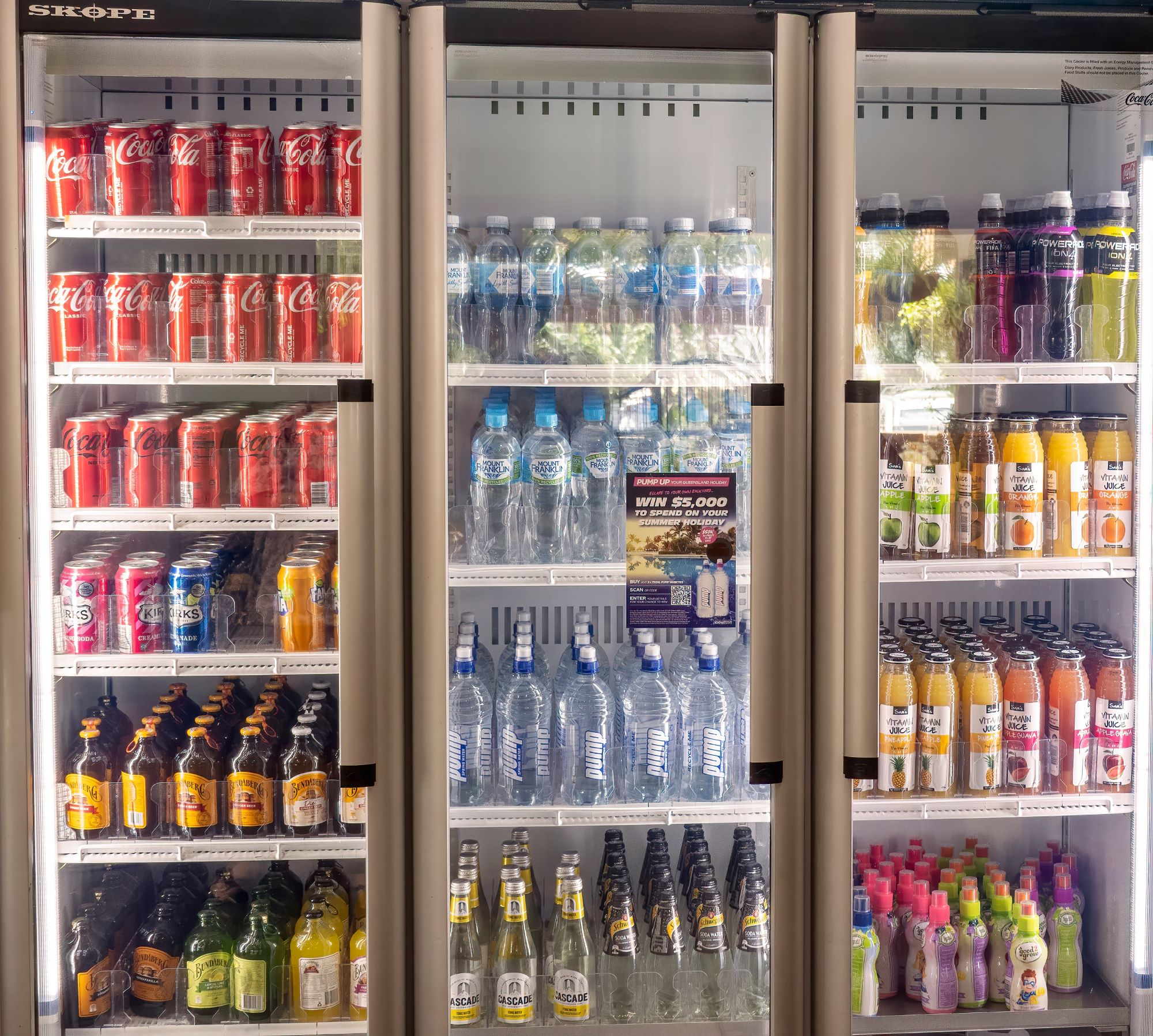Refrigeration
For some businesses, refrigeration is the largest component of electricity costs – but it’s also often overlooked as a source of electricity savings. Your choice of refrigeration equipment, as well as the way you operate it, can have a big impact on your electricity bill.
Of course, when reducing your refrigeration electricity use you must be careful not to compromise the quality of your product, as poor food temperature control can cause food poisoning. You must have a good understanding of the health and safety requirements for the types of food your business deals with. Refrigeration specialists are best placed to advise you on maintaining or improving your existing refrigeration or choosing a new system if you are expanding. The general tips below may help you identify some energy saving measures suitable to implement now.
Operate your fridge or freezer efficiently
- Minimise the number of times doors are opened, to prevent cool air from leaving the refrigerator and warm air entering. Make sure you close cool room doors when you enter or leave
- Manage your stock levels, consolidate stock and load stock into fridges in batches (at night if possible)
- Try to keep refrigerators at least 60% full and freezers at least 75% full to improve energy efficiency, as a full refrigerator retains cold longer and will cycle on less frequently. Containers of water can fill empty spaces and reduce the amount of air to be cooled
- Spread out food packages in the freezer to allow better air circulation, reducing the time and energy it takes to freeze food
- One full refrigerator or freezer is more efficient than two half full ones
- When extensive loading and unloading is occurring, shut refrigeration down
- Set operating temperatures only as low as recommended to decrease running costs and preserve your products. Check refrigerators and freezers regularly to maintain consistent temperatures
- Reset your defrost cycle frequency or install an automatic control to prevent ice build-up, which reduces efficiency
- Ensure you operate the system at its lowest possible condensing pressure with existing condenser capacity
- Raise the evaporator temperature to its maximum possible level for best efficiency.
Keep your refrigeration cool
- Your refrigerator or freezer has to work harder when its surrounding environment is warm. Reduce heat gain from the external environment to reduce cooling needs
- Reflect heat by painting external building walls and the refrigerator unit in a pale colour
- Install low temperature occupancy sensors or timed switches in walk-in refrigerators and freezers to control lighting, save lighting energy, and reduce compressor load
- Use a motion-sensor switch on any external lighting near your refrigeration unit, to ensure it goes on only when needed. This also helps reduce heat and cooling costs
- LED lights, compact fluorescent lights (CFLs) or fluorescent tube lighting will produce less heat than incandescent lights, both inside and outside your refrigeration unit
- Install automatic door-closers on refrigerators, strip or air curtains on walk-in refrigerators and freezers, and pull-down blinds on open dairy and produce cases
- Ensure fridges are well ventilated and not exposed to direct sunlight or heat, with at least 80mm between the condenser coils and the wall, as poor ventilation can increase electricity usage by up to 15%
- Use as much insulation as is practical in walls, floors and ceilings
- Install dehumidifier units to control humidity, which can greatly affect refrigeration efficiency
- Consider ways to utilise waste heat from your refrigerator, such as for space heating or domestic water pre-heating. This can also improve your refrigeration.
Energy efficient refrigeration systems
- Replace older, inefficient models with new, higher star rated models that can use less than half the electricity
- Consider your size and temperature requirements, door/access type, insulation, equipment location, controls and monitoring when purchasing new refrigeration systems
- Consider a walk-in refrigerator controller, which saves electricity by automating the refrigerator's fan control, slowing the air within the refrigerator when full speed is not required, and reducing heat production
- Match the size of your cold room to your needs, as units that are too big will use more electricity than necessary to cool an area, while units that are too small will use more electricity to keep their contents cool
- Install energy-efficient case lighting to reduce electricity usage and cooling load
- Install evaporative condensers to expel heat instead of air-cooled condensers
- Use scroll compressors instead of reciprocating compressors to move refrigerant more efficiently, reducing your electricity use by up to 20%
- Use liquid pressure pumps or electronic expansion valves to allow reduction of head pressure, for lower condensing temperatures and reduced electricity costs.
Maintain equipment
- Maintain refrigerators regularly to keep them running efficiently, and keep an ear out for unusual sounds which may indicate a problem
- Regularly check door seals, hinges, catches and weather-stripping and repair if necessary
- Regularly inspect mechanical and electrical equipment, and keep heat transfer surfaces clean, especially refrigeration coils
- Replace insulation that is damaged by moisture, as it is less effective
- Maintain the fan to achieve the best cold air circulation
- Keeping your refrigerators level will help to ensure doors are tightly sealed, retaining cold air.

